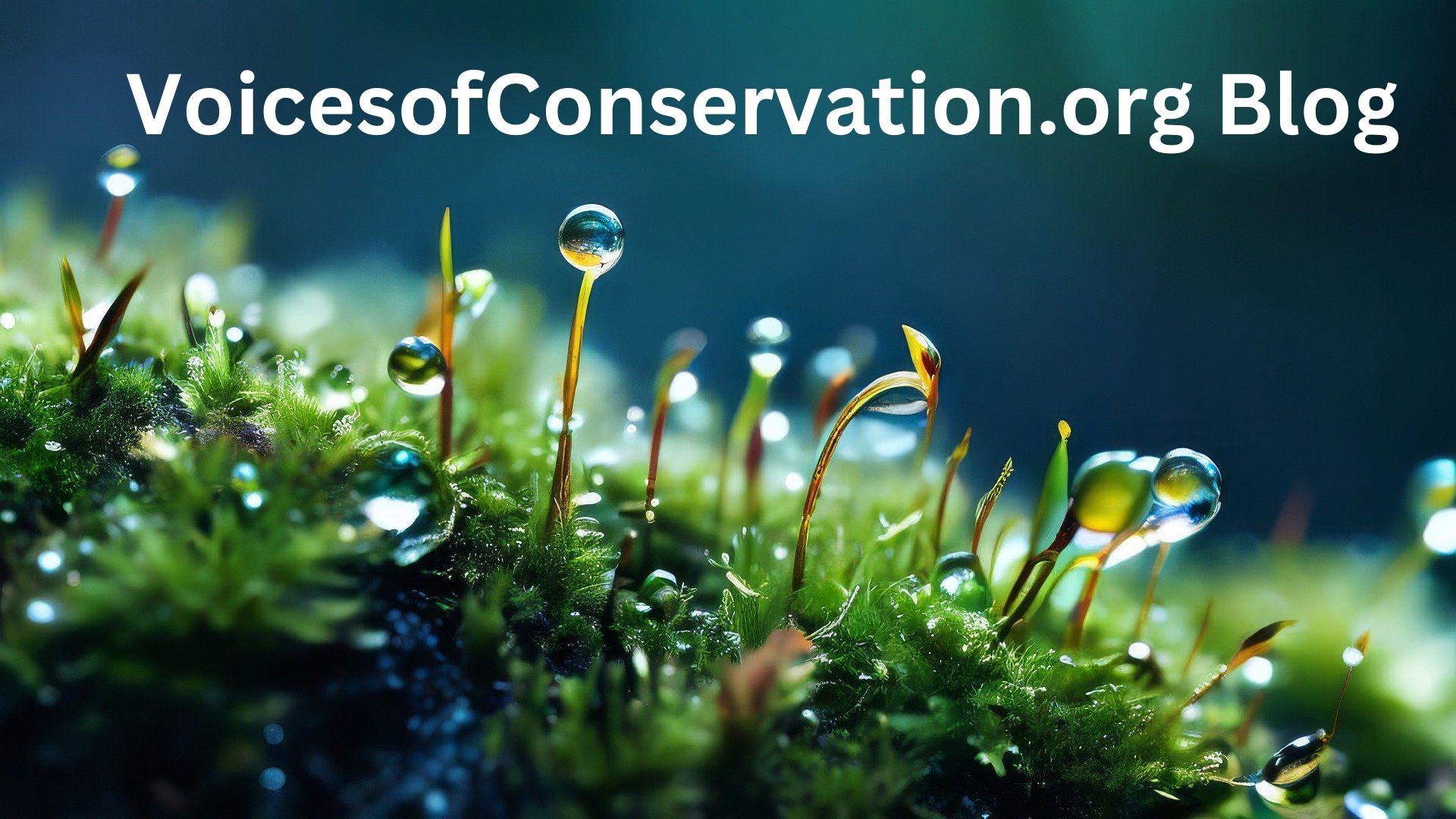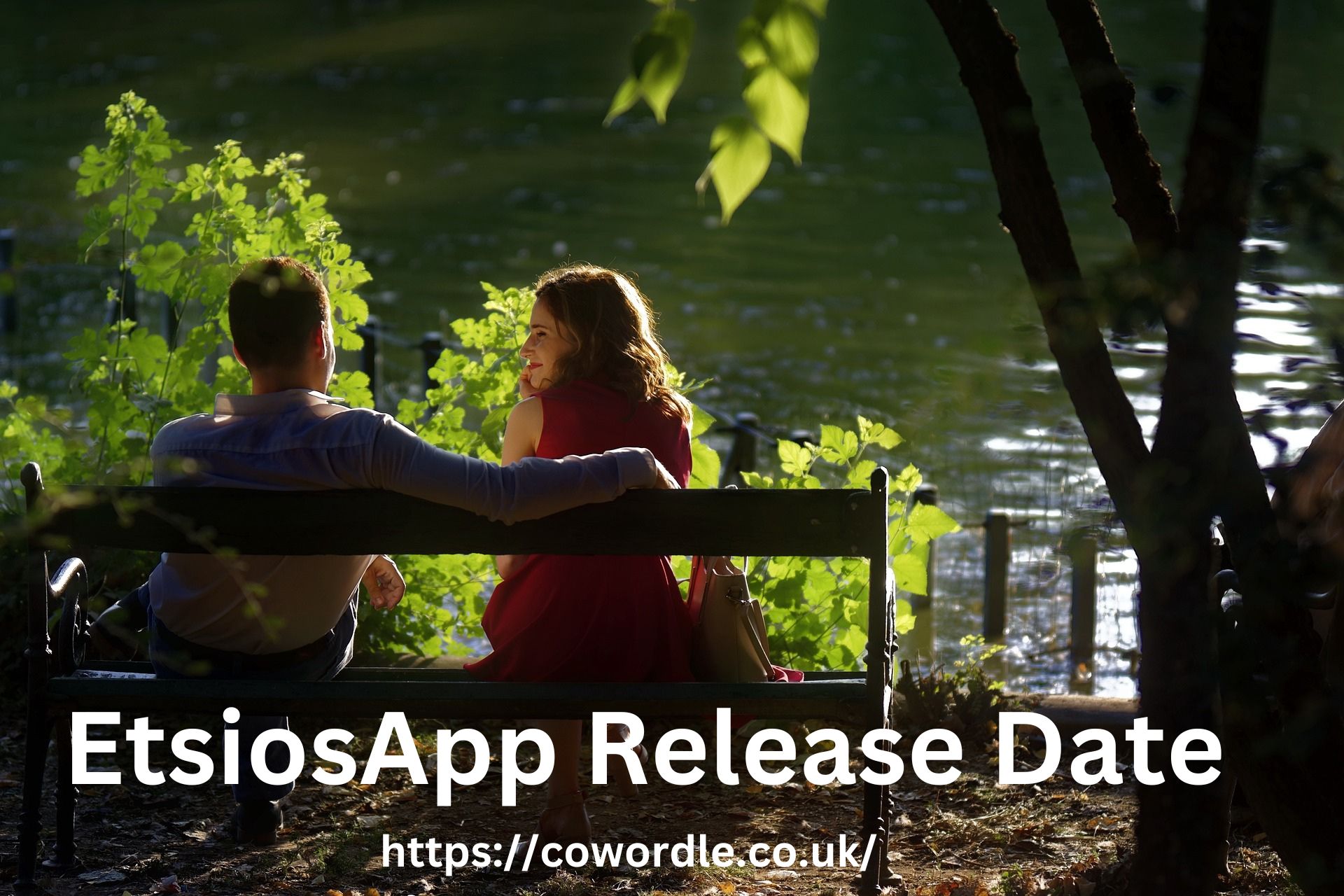In an era where environmental challenges are becoming increasingly urgent, the role of conservation efforts is more critical than ever. VoicesofConservation.org stands at the forefront of this movement, serving as a beacon for those passionate about protecting our planet. Whether you are a seasoned environmental advocate or someone just beginning to explore the world of conservation, our blog is designed to inspire, educate, and mobilize you.
At VoicesofConservation.org, we believe that every action, no matter how small, can contribute to a larger impact. Our platform is dedicated to showcasing the incredible efforts of community-led conservation projects and individual initiatives that are making a real difference. From restoring marine ecosystems in Kenya to reviving endangered species in California, we highlight success stories that demonstrate the power of collective action.
Join us as we delve into the importance of conservation, explore ways you can get involved, and share practical tips for sustainable living. By working together, we can ensure a healthier, more sustainable future for generations to come. Let’s take a closer look at why conservation is crucial and how you can play a part in this global effort.
Why Conservation is Crucial
Conservation is not just a noble endeavor; it is a necessity for the survival of our planet and future generations. The importance of conservation lies in its ability to protect biodiversity, maintain ecosystem services, combat climate change, and foster a deeper connection between humans and nature.
Protecting Biodiversity
Biodiversity is the foundation of life on Earth. Each species, no matter how small, plays a unique role in maintaining the balance of ecosystems. The loss of even a single species can lead to cascading effects that disrupt food chains, diminish natural habitats, and alter the functionality of ecosystems. By conserving biodiversity, we ensure the stability and resilience of these ecosystems, which in turn supports human life through resources like food, medicine, and clean water.
Maintaining Ecosystem Services
Ecosystem services are the benefits that nature provides to humans, such as pollination, water purification, soil fertility, and climate regulation. Forests, wetlands, and oceans act as natural carbon sinks, absorbing and storing carbon dioxide, which helps mitigate the effects of climate change. Healthy ecosystems also provide protection against natural disasters, such as floods and hurricanes, by stabilizing the soil and regulating water flow. Conservation efforts help preserve these invaluable services, which are essential for our well-being and survival.
Combating Climate Change
Climate change is one of the most pressing challenges of our time, posing significant threats to natural and human systems. Conservation initiatives play a vital role in mitigating climate change by protecting and restoring carbon-rich habitats like forests, peatlands, and mangroves. These ecosystems sequester carbon dioxide from the atmosphere, helping to reduce greenhouse gas concentrations. Additionally, conservation strategies that promote sustainable land use and renewable energy sources contribute to reducing our carbon footprint.
Fostering Human-Nature Connection
Engaging in conservation activities fosters a sense of stewardship and responsibility towards the environment. It provides opportunities for individuals and communities to connect with nature, gain a deeper appreciation for its beauty and complexity, and understand the impact of their actions. This connection can inspire more sustainable lifestyles and greater support for environmental policies and initiatives.
Empowering Communities
Community-led conservation projects empower local residents to take charge of their natural resources. These initiatives often lead to improved livelihoods, enhanced food security, and strengthened social cohesion. By involving communities in conservation efforts, we ensure that the benefits are shared equitably and that conservation practices are culturally appropriate and sustainable.
Ensuring Future Sustainability
The actions we take today in conserving our natural resources will determine the quality of life for future generations. By preserving habitats, protecting species, and maintaining ecosystem services, we are safeguarding the environment for our children and grandchildren. Conservation is an investment in the future, ensuring that they too can enjoy the beauty and benefits of a healthy, thriving planet.
In conclusion, conservation is crucial for maintaining the delicate balance of our ecosystems, combating climate change, and ensuring a sustainable future. It requires collective action, informed by science and guided by a commitment to protect the natural world. At VoicesofConservation.org, we are dedicated to highlighting these efforts and encouraging everyone to participate in this vital mission.
How to Get Involved: Volunteering and Donations
Getting involved in conservation efforts can make a significant difference, and there are numerous ways to contribute through volunteering and donations. Here’s how you can participate effectively:
Volunteering
Volunteering provides hands-on opportunities to support conservation initiatives, offering both time and skills to make a tangible impact. Here’s how you can get involved:
- Local Conservation Groups: Many local organizations offer volunteer programs for various activities, such as habitat restoration, wildlife monitoring, and educational outreach. Contact local environmental groups or community organizations to find volunteer opportunities in your area.
- National and International Organizations: Larger organizations often have structured volunteer programs. These might include working on conservation projects abroad, participating in wildlife surveys, or supporting administrative tasks. Examples include the World Wildlife Fund (WWF), The Nature Conservancy, and the Sierra Club.
- Specialized Projects: Some conservation efforts require specific skills or expertise, such as scientific research, data analysis, or advocacy. Look for specialized projects that match your skills, whether it’s assisting with field research, creating educational materials, or helping with fundraising events.
- Community Events: Participate in local clean-ups, tree-planting events, or environmental festivals. These activities often require volunteers and provide a great way to contribute to conservation while connecting with others who share your passion.
- Educational Outreach: Volunteer to educate others about conservation issues. This could involve giving talks at schools, leading workshops, or participating in public awareness campaigns.
Donations
Financial support is crucial for sustaining conservation efforts and allowing organizations to implement impactful projects. Here’s how you can contribute:
- Direct Donations: Most conservation organizations accept monetary donations directly through their websites. Consider setting up one-time or recurring donations to support their ongoing projects.
- Crowdfunding Campaigns: Many conservation projects run crowdfunding campaigns to raise funds for specific initiatives. These campaigns often provide detailed information about the project and how your contribution will be used.
- Sponsorships: Some organizations offer sponsorship programs where you can fund the protection of specific species or habitats. Sponsorships often come with updates and reports on how your contributions are making a difference.
- Corporate Matching: Check if your employer offers a corporate matching program, where they match your donations to nonprofit organizations. This can double the impact of your contribution.
- In-Kind Donations: Besides money, organizations may accept in-kind donations such as equipment, supplies, or professional services. If you have resources or skills that could benefit a conservation group, consider offering them.
- Planned Giving: For those looking to make a lasting impact, planned giving involves including a conservation organization in your estate planning. This can be done through bequests, charitable trusts, or endowments.
- Fundraising Events: Participate in or organize fundraising events to support conservation efforts. This could include charity runs, auctions, or benefit dinners.
By volunteering your time and resources, or making financial contributions, you can play a crucial role in supporting conservation efforts and ensuring a sustainable future for our planet.
Advocacy and Activism for Environmental Protection
Advocacy and activism are powerful tools for driving environmental change and influencing policies that protect our planet. Here’s how you can effectively engage in these activities:
Understanding Advocacy and Activism
- Advocacy involves supporting and promoting specific policies, initiatives, or changes to advance environmental protection. It often includes lobbying government officials, participating in public consultations, and raising awareness through campaigns.
- Activism is a more direct approach that often involves taking action to challenge existing policies or practices, such as organizing protests, participating in civil disobedience, or engaging in grassroots mobilization.
How to Get Involved in Advocacy and Activism
- Educate Yourself and Others
- Stay Informed: Keep up-to-date with current environmental issues, policies, and legislation. Understanding the complexities of environmental challenges and solutions will enhance your ability to advocate effectively.
- Raise Awareness: Share information about environmental issues and solutions through social media, blogs, or community events. Educating others can build a larger base of support for environmental causes.
- Engage in Policy Advocacy
- Contact Representatives: Reach out to local, state, or national legislators to express your support for or opposition to specific policies or legislation. Write letters, make phone calls, or attend town hall meetings to make your voice heard.
- Participate in Public Comment Periods: Many environmental decisions involve public comment periods where you can submit feedback on proposed regulations or projects. Participate in these opportunities to influence policy outcomes.
- Join or Support Environmental Organizations
- Become a Member: Join organizations that align with your environmental values. Membership often includes opportunities to engage in advocacy and activism through organized campaigns and events.
- Volunteer: Offer your time and skills to support the activities of environmental organizations. This could involve helping with campaign activities, event planning, or grassroots organizing.
- Organize and Participate in Campaigns
- Lead Campaigns: Organize your own advocacy campaigns to address local or national environmental issues. This might include petition drives, awareness campaigns, or community events.
- Participate in Protests and Demonstrations: Join or organize protests and demonstrations to draw attention to environmental issues and demand action from policymakers and corporations.
- Use Digital Tools and Social Media
- Leverage Social Media: Use platforms like Twitter, Facebook, and Instagram to share information, mobilize support, and amplify your message. Social media can help reach a broader audience and generate momentum for environmental causes.
- Create Online Petitions: Launch or support online petitions to mobilize public support for specific environmental issues or policies. Platforms like Change.org and Care2 make it easy to gather signatures and promote causes.
- Collaborate with Others
- Build Coalitions: Partner with other organizations, community groups, or activists to strengthen your efforts. Collaborative approaches can enhance the impact of advocacy and activism through shared resources and expertise.
- Engage with Local Communities: Work with local communities to address specific environmental issues and build grassroots support. Local engagement can lead to more effective and targeted advocacy efforts.
- Monitor and Evaluate Impact
- Track Progress: Monitor the outcomes of your advocacy and activism efforts to assess their effectiveness. This might include evaluating policy changes, community responses, or shifts in public opinion.
- Adapt Strategies: Based on your evaluation, adjust your strategies to improve effectiveness and address new challenges. Flexibility and persistence are key to successful advocacy and activism.
By actively engaging in advocacy and activism, you can play a crucial role in driving environmental change and influencing policies that protect our planet. Your efforts can contribute to a more sustainable future and inspire others to take action as well.
Small Changes, Big Impacts: Tips for Sustainable Living
Adopting sustainable living practices doesn’t have to be overwhelming. Small, manageable changes in your daily routine can collectively lead to significant environmental benefits. Here’s a detailed guide on how to make impactful adjustments:
1. Reduce Single-Use Plastics
- Opt for Reusable Alternatives: Replace single-use plastic items like bags, bottles, and cutlery with reusable options. Use cloth bags, stainless steel or glass bottles, and bamboo or metal utensils.
- Avoid Plastic Packaging: Choose products with minimal or no plastic packaging. Buy in bulk and bring your own containers to reduce waste.
2. Conserve Energy
- Switch to Energy-Efficient Appliances: Use energy-efficient appliances such as LED light bulbs, Energy Star-rated appliances, and smart thermostats to reduce energy consumption.
- Practice Energy-Saving Habits: Turn off lights and unplug electronics when not in use. Adjust your thermostat to reduce heating and cooling needs and use natural light whenever possible.
3. Adopt Sustainable Transportation
- Use Public Transit or Carpool: Reduce your carbon footprint by using public transportation, carpooling, or biking instead of driving alone.
- Consider Electric Vehicles: If feasible, switch to an electric or hybrid vehicle to lower greenhouse gas emissions.
4. Support Local and Sustainable Food Choices
- Buy Local Produce: Purchase food from local farmers’ markets or community-supported agriculture (CSA) programs to support local agriculture and reduce transportation emissions.
- Embrace Plant-Based Meals: Incorporate more plant-based meals into your diet. Reducing meat and dairy consumption can lower your environmental impact.
5. Practice Waste Reduction
- Recycle and Compost: Separate recyclable materials from trash and participate in local recycling programs. Compost food scraps and yard waste to reduce landfill contributions.
- Reduce Food Waste: Plan meals, store food properly, and use leftovers creatively to minimize food waste. Composting food scraps also contributes to waste reduction.
6. Water Conservation
- Install Water-Efficient Fixtures: Use water-saving fixtures such as low-flow showerheads, faucets, and toilets to reduce water consumption.
- Practice Smart Water Use: Avoid letting water run unnecessarily. Fix leaks promptly and use water-efficient practices in your garden and landscaping.
7. Green Your Home
- Implement Eco-Friendly Home Improvements: Insulate your home to reduce heating and cooling needs. Use sustainable materials for renovations and opt for low-VOC paints and finishes.
- Create a Sustainable Garden: Grow your own fruits, vegetables, and herbs to reduce food miles and promote biodiversity. Use organic gardening practices to avoid harmful chemicals.
8. Adopt Minimalist Habits
- Declutter and Donate: Simplify your living space by decluttering and donating items you no longer need. This can reduce waste and help others in need.
- Buy Less, Choose Wisely: Focus on quality over quantity when making purchases. Opt for durable and timeless products that have a longer lifespan.
9. Educate and Advocate
- Stay Informed: Keep learning about sustainable practices and environmental issues to make informed choices.
- Share Knowledge: Spread awareness about sustainability through conversations, social media, and community events. Encourage others to adopt eco-friendly practices.
By making these small but impactful changes, you can contribute to a more sustainable lifestyle. Each step, no matter how minor it may seem, can collectively lead to substantial environmental benefits and promote a healthier planet for future generations.
Success Stories: Individuals Making a Difference
Every significant conservation effort starts with individuals who are passionate about making a change. Here are some inspiring success stories of individuals who have made a remarkable impact on environmental protection and sustainability:
1. Sarah: Championing Marine Conservation
Background: Sarah, a marine biology enthusiast, recognized the severe impact of plastic waste on marine ecosystems.
Action Taken: She launched a local beach cleanup initiative to address the growing problem of plastic pollution. Sarah organized regular community cleanups and engaged local schools and organizations to raise awareness about the dangers of plastic waste.
Impact: Her efforts resulted in cleaner beaches and a reduction in plastic waste. Sarah’s project also educated many people about marine conservation and inspired similar initiatives in other coastal areas.
2. Mark: Creating a Pollinator Paradise
Background: Mark was concerned about the declining populations of pollinators such as bees and butterflies, which are essential for biodiversity and agriculture.
Action Taken: He transformed his urban garden into a pollinator-friendly habitat by planting native flowering plants and creating habitats for insects. Mark also educated his community on the importance of pollinators and encouraged them to create similar gardens.
Impact: His garden flourished into a vibrant space that supports numerous pollinators. Mark’s work has increased local biodiversity and inspired others to create pollinator-friendly spaces in their own gardens.
3. Chloe: Advocating for Green Spaces
Background: Chloe, an environmental activist, noticed the lack of green spaces in her urban neighborhood, which was impacting both community well-being and local wildlife.
Action Taken: She launched a campaign to promote the creation and preservation of green spaces. Chloe organized community meetings, raised funds through local events, and partnered with city officials to develop new green areas and enhance existing ones.
Impact: Chloe’s campaign successfully led to the establishment of new parks and the improvement of existing green spaces. Her work has not only provided recreational areas for residents but also improved local biodiversity and environmental quality.
4. David: Leading the Urban Reforestation Movement
Background: David was concerned about the lack of green spaces in his city and the associated urban heat island effect.
Action Taken: He started an urban reforestation project aimed at planting trees in vacant lots and public spaces. David mobilized volunteers, secured funding through grants and donations, and worked with local authorities to ensure the survival and maintenance of the newly planted trees.
Impact: David’s project has planted hundreds of trees, significantly improving air quality and reducing the urban heat island effect. The initiative has also fostered community involvement and raised awareness about the benefits of urban greenery.
5. Emily: Reducing Food Waste Through Community Initiatives
Background: Emily recognized the issue of food waste and its environmental impact, including the waste of resources and greenhouse gas emissions from decomposing food.
Action Taken: She established a community food recovery program that collects surplus food from local markets, restaurants, and households. The recovered food is then redistributed to local food banks and shelters.
Impact: Emily’s program has successfully diverted thousands of pounds of food from landfills, providing essential nutrition to those in need and reducing the environmental footprint of food waste.
6. John: Innovating Sustainable Farming Practices
Background: John, a farmer, was concerned about the environmental impact of conventional farming practices, including soil degradation and chemical runoff.
Action Taken: He adopted and promoted sustainable farming techniques such as organic farming, crop rotation, and reduced use of chemical fertilizers and pesticides. John also shared his knowledge with other farmers through workshops and demonstrations.
Impact: John’s farm has become a model of sustainable agriculture, improving soil health and reducing environmental pollution. His efforts have influenced other farmers to adopt similar practices, contributing to broader environmental benefits.
These success stories illustrate the profound impact that dedicated individuals can have on conservation and sustainability. Their actions demonstrate that with passion, commitment, and creativity, one person can drive significant positive change in their community and beyond.
Conclusion
The power of individual actions in environmental conservation cannot be overstated. As highlighted through these compelling success stories, dedicated individuals can make a significant impact by pursuing their passions and addressing environmental challenges. Whether it’s through community cleanups, creating habitats for pollinators, advocating for green spaces, leading reforestation efforts, reducing food waste, or innovating sustainable farming practices, each action contributes to a broader movement towards a healthier planet.
These stories serve as a reminder that every small step counts in the journey towards environmental sustainability. They illustrate that commitment, creativity, and collaboration can lead to meaningful changes that benefit both people and the planet. By drawing inspiration from these examples, we are encouraged to take our own steps towards environmental stewardship.
The collective efforts of passionate individuals create ripples of positive change, fostering a culture of awareness and action. As we move forward, let us embrace the spirit of these success stories and continue to support and engage in initiatives that protect and preserve our natural world.
Together, our individual actions can lead to significant improvements in environmental health and sustainability, ensuring a better future for generations to come. Every voice and effort matters in the grand scheme of conservation, and through shared commitment, we can drive impactful change and contribute to the ongoing quest for a more sustainable and thriving planet.
Frequently Asked Questions
1. What is the importance of conservation?
Conservation is essential for preserving biodiversity, maintaining ecosystem balance, and ensuring the health of natural resources like clean air and water. Protecting various species and habitats helps maintain ecological stability, supports climate regulation, and secures resources for future generations.
2. How can I get involved in environmental conservation?
You can get involved by volunteering with local conservation groups, donating to environmental organizations, and participating in community cleanups or tree-planting events. Additionally, spreading awareness through social media and supporting sustainable businesses can make a difference.
3. What are some effective ways to advocate for environmental protection?
Effective advocacy includes raising awareness about environmental issues, supporting legislation that promotes sustainability, participating in or organizing grassroots campaigns, and using social media to amplify conservation messages. Engaging with community leaders and policymakers can also drive significant change.
4. How can small lifestyle changes impact the environment?
Small changes, such as reducing plastic use, conserving energy, supporting local produce, and recycling, can collectively lead to substantial environmental benefits. These actions help decrease waste, lower carbon footprints, and promote sustainable practices, contributing to overall environmental health.
5. Can individual efforts really make a difference in conservation?
Yes, individual efforts can significantly impact conservation. Personal actions, such as reducing waste, volunteering, and advocating for change, can inspire others and contribute to larger conservation movements. Success stories of individuals making a difference show that collective small actions can lead to substantial environmental improvements.
6. Where can I find more information about conservation efforts?
For more information, visit reputable conservation websites, follow environmental blogs like Voices of Conservation, and engage with local conservation organizations. Many resources are available online and in your community to help you learn more about and get involved in conservation efforts.
7. How do I choose the right conservation organization to support?
Choose organizations based on their mission, transparency, and impact. Look for groups with a proven track record of successful projects and those that align with your values. Reviewing their financials, project reports, and testimonials can help ensure your support is effective and well-directed.
8. What are some examples of successful individual conservation projects?
Examples include local cleanups led by community members, backyard gardens created to support pollinators, and campaigns to reduce plastic waste. Success stories of individuals like Sarah with marine cleanups, Mark with pollinator gardens, and Chloe with green space advocacy showcase how personal initiatives can make a significant difference.
9. How can I stay updated on conservation news and initiatives?
Subscribe to newsletters from conservation organizations, follow environmental blogs and social media accounts, and participate in local community meetings or events. Staying connected with these sources will keep you informed about current initiatives and opportunities to get involved.
10. Can I contribute to conservation through my professional skills?
Absolutely. Professionals in various fields can contribute their expertise to conservation efforts. Whether it’s through pro-bono work, advising on sustainability practices, or developing technology solutions, leveraging your skills can provide valuable support to environmental projects.











